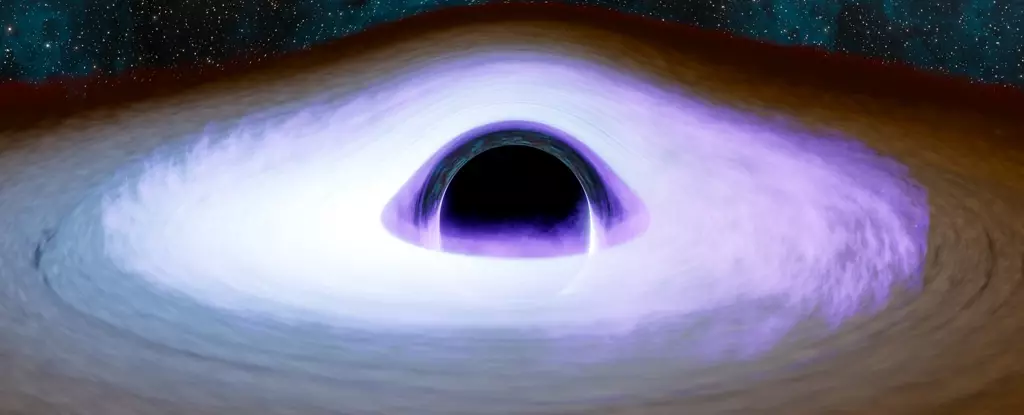The cosmos is filled with enigmatic phenomena, one of the most captivating being the total solar eclipse. For those fortunate enough to witness this celestial event, the breathtaking sight of the Sun’s corona—a delicate halo of light—creates a moment that lingers in memory. This celestial corona, the Sun’s outer atmosphere, is a spectacle that raises profound questions about the universe. Yet, while we can readily view the Sun’s corona in a moment of eclipse, the concept of a similar phenomenon existing around black holes highlights a dark and largely uncharted territory in astrophysics.
The vacuum-like consistency of the Sun’s corona belies its extreme temperature, which reaches millions of degrees. This paradox invites examination of analogous structures surrounding black holes, where theoretical models suggest their own form of a corona enveloping them. However, observing these black hole coronas presents substantial challenges due to their elusive nature and the overwhelming light emitted by surrounding accretion disks.
To understand the conceptual model behind black hole coronas, it’s crucial to first decode how active black holes interact with their environment. Surrounding these stellar behemoths is a donut-shaped torus comprised of gas and dust, where an accretion disk of superheated material spirals inward, aligned with the black hole’s rotational axis. As this material interacts with the black hole’s gravitational pull, it generates immense energy output, primarily in the form of light manifesting in various types of active galactic nuclei (AGNs).
The morphology of AGNs is intricately linked to our vantage point from Earth. Depending on the orientation of the black hole and its surrounding material, we may perceive different forms of AGNs: some appearing obscured by dense clouds of gas, while others reveal their brilliant accretion disks without such obstructions. However, the crown jewel—a black hole’s corona—remains hidden, yet its existence is inferred by the dynamics at play.
Recent investigations published in The Astrophysical Journal represent a significant leap in our understanding of black hole coronas. Researchers adopted innovative observational techniques reminiscent of eclipse observations. By observing obscured black holes, which mask their accretion disks like eclipsed Suns, scientists were able to apply novel methodologies to detect the X-ray emissions from the hot corona.
The crucial breakthrough came when researchers harnessed instruments like NASA’s Imaging X-ray Polarimetry Explorer (IPXE) to gather data regarding a diverse sample of obscured black holes. Notable subjects of this study included Cygnus X-1 and X-3 within our Milky Way, as well as LMG X-1 and X-3 located in the Large Magellanic Cloud. Through this observational strategy, scientists have gained unprecedented insight into the energy mechanics of these dark entities.
One of the most astounding findings of this research is the structural arrangement of black hole coronas. Unlike the spherical shape of the Sun’s corona, the study revealed that black hole coronas tend to form in a disk-like structure, akin to the accretion disk. This paradigm shift offers an intriguing lens through which to understand how black holes interact with surrounding materials and consume matter.
By uncovering these patterns, researchers can refine their theoretical models. Such discoveries not only enhance our understanding of black hole physics but also advance our knowledge of how these gigantic entities facilitate powerful energy outputs in distant galaxies. The implications of this research stretch far beyond academic interest; they set the stage for possible technological advancements and innovations inspired by the natural phenomena of our universe.
The exploration of black hole coronas marks an essential endeavor for astrophysics, bridging the gap between theory and observation. As our methods become more refined and instruments more sophisticated, each revelation about these enigmatic structures inches us closer to comprehending the profound mysteries of the universe. Much like the fleeting moment of a total eclipse, our discoveries may illuminate the darkness surrounding black holes, allowing us to uncover the hidden flames in the heart of cosmic shadows. The more we learn, the more we understand that our universe is a canvas of both light and darkness, awaiting further exploration.


Leave a Reply